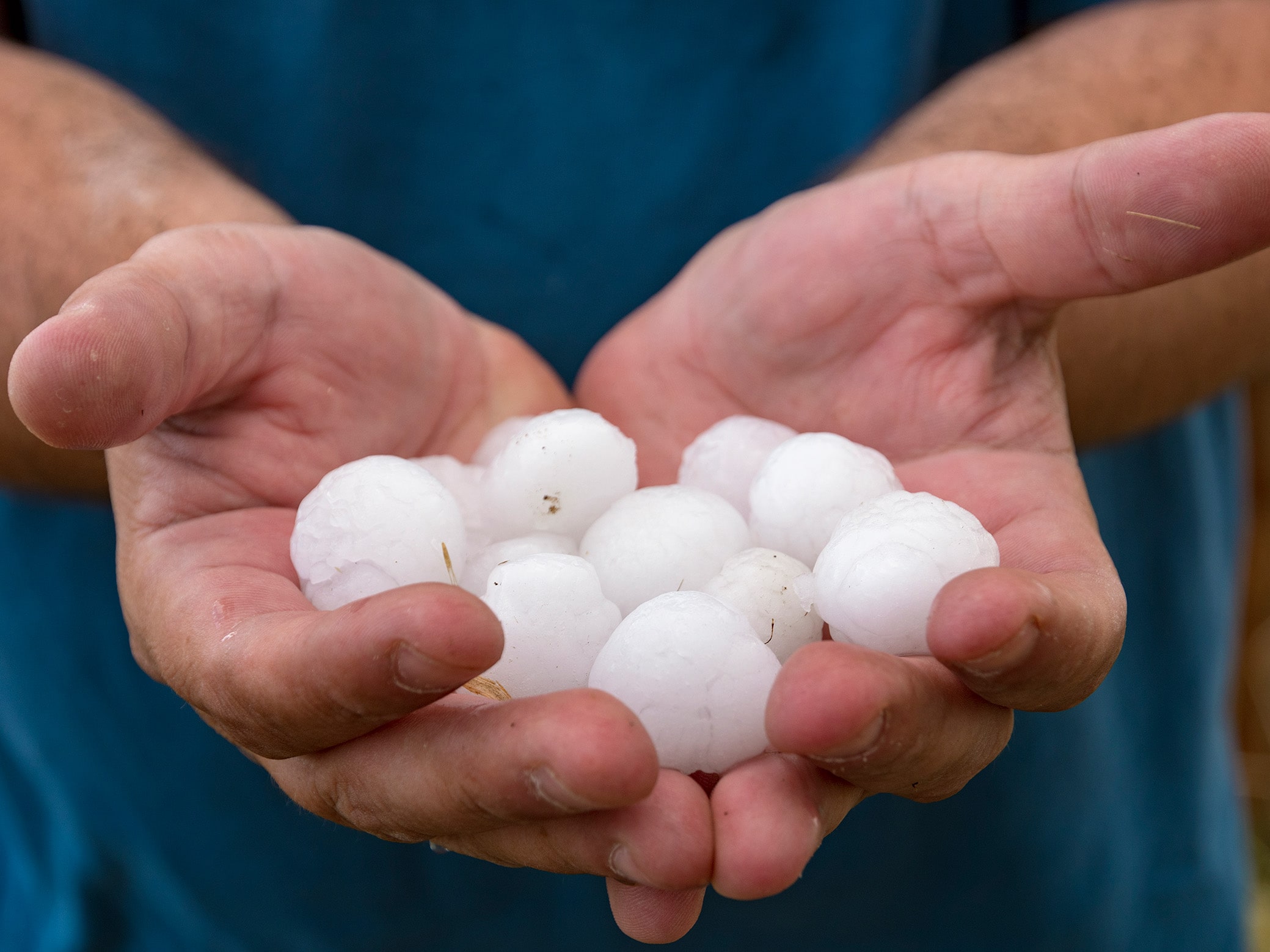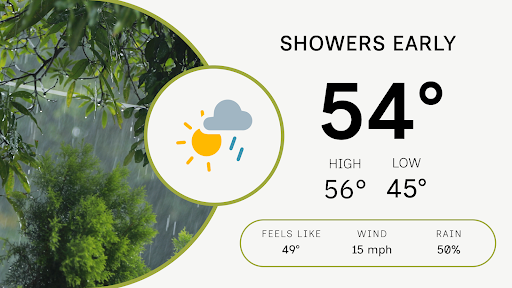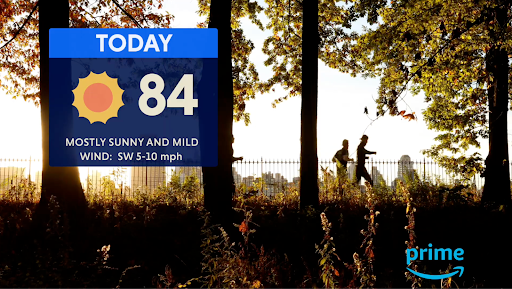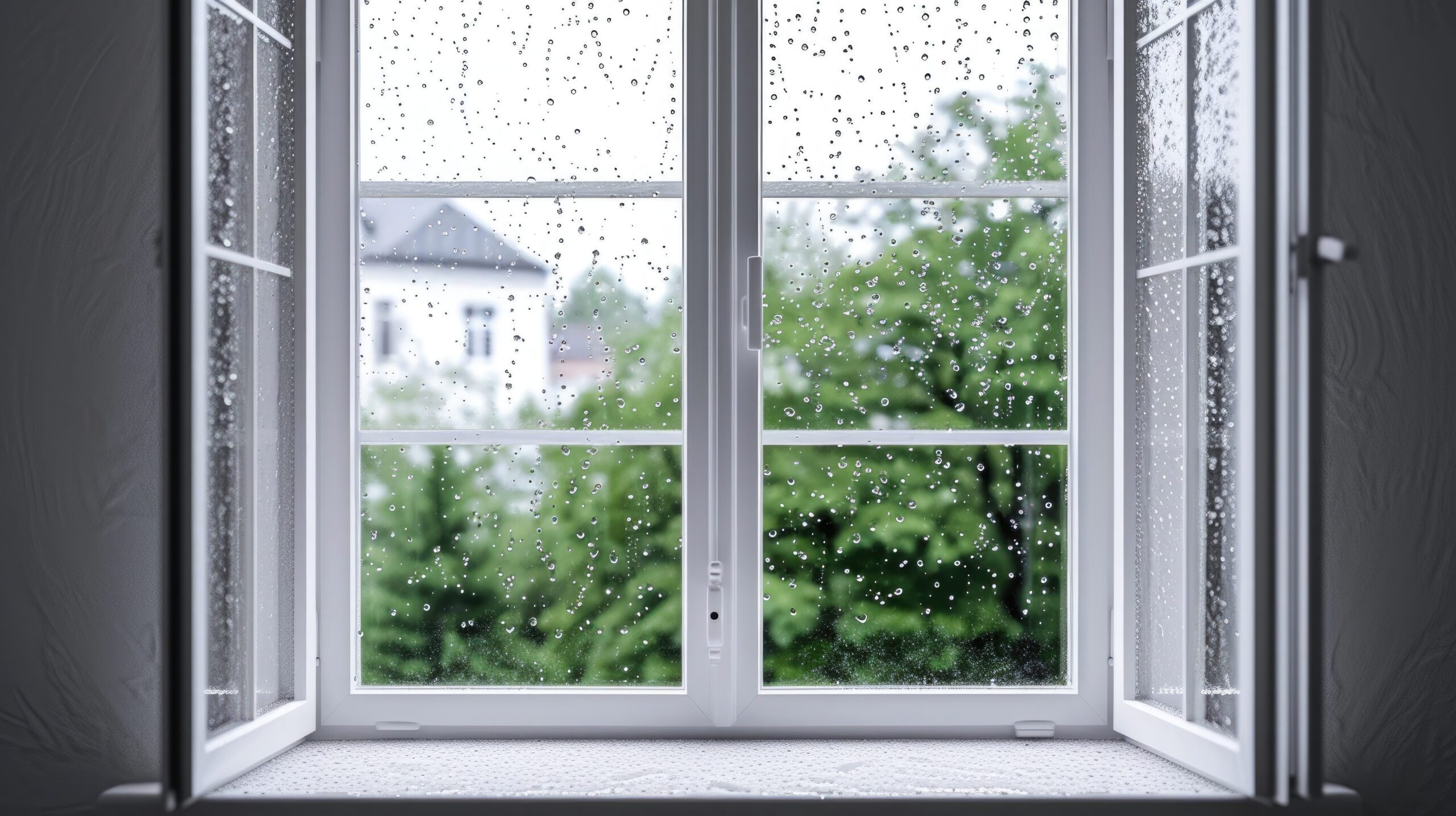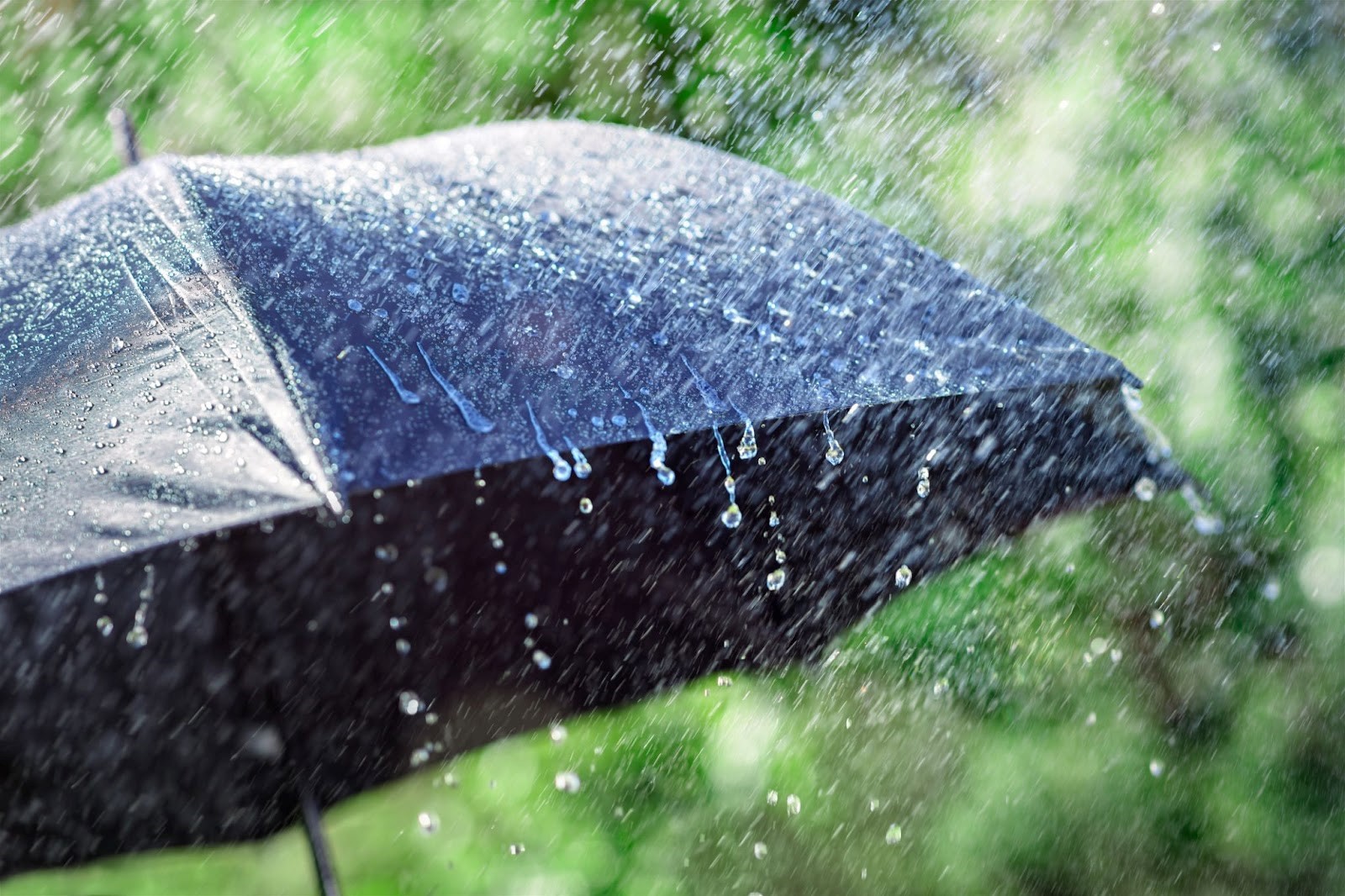Weather intelligence for the future: Crafting a strategic enterprise approach to changing environmental conditions
Continue readingAdvanced warning increases safety, prevents accidents, and decreases property damage.
Hail is a weather phenomenon associated with thunderstorms and these frozen raindrops,–which can vary in size from pea-sized to (in rare instances) grapefruit-sized, – can leave a wake of destruction in their path.
For businesses, safety is the major concern when a hail storm is in the vicinity. Depending on the hail storm’s severity, it can cause damage to property (aircraft, homes, cars), injury and even death to livestock and people. The Weather Company has the tools necessary to provide timely, accurate data that enables businesses to keep employees safe, protect assets and convey vital information effectively during hail storms.
Hail storm basics
What is hail?
Hail is a solid form of precipitation that is compounded out of ice, which forms during severe thunderstorms. This form of precipitation should not be confused with ice pellets (or sleet) which are smaller and formed in the winter months. This severe weather condition usually occurs in the summertime and must be 5mm in diameter. Despite the potential damage to property and vegetation, hail is not as life-threatening as other storms.
In modern history, only three people have died due to a hail storm. However, the effects on power lines and crops can disrupt electricity, supply chains, and other important necessities. Hail can also cause destruction to homes and cars, leaving an expensive repair bill for affected areas. On average, hail damage costs the US USD 22 billion a year. In April, 2022, three separate hail storms hit Oklahoma and Texas, costing over USD 1 billion in damages. The first storm resulted in golf sized hail, leaving over 100 miles of hail swaths. The second storm produced hail that was larger than a baseball (3.25 diameter), shattering numerous windshields in Keller, Texas. The third storm hit Norman, Oklahoma, resulting in the destruction of a Walmart ceiling, vehicles, and injury to a person outside.
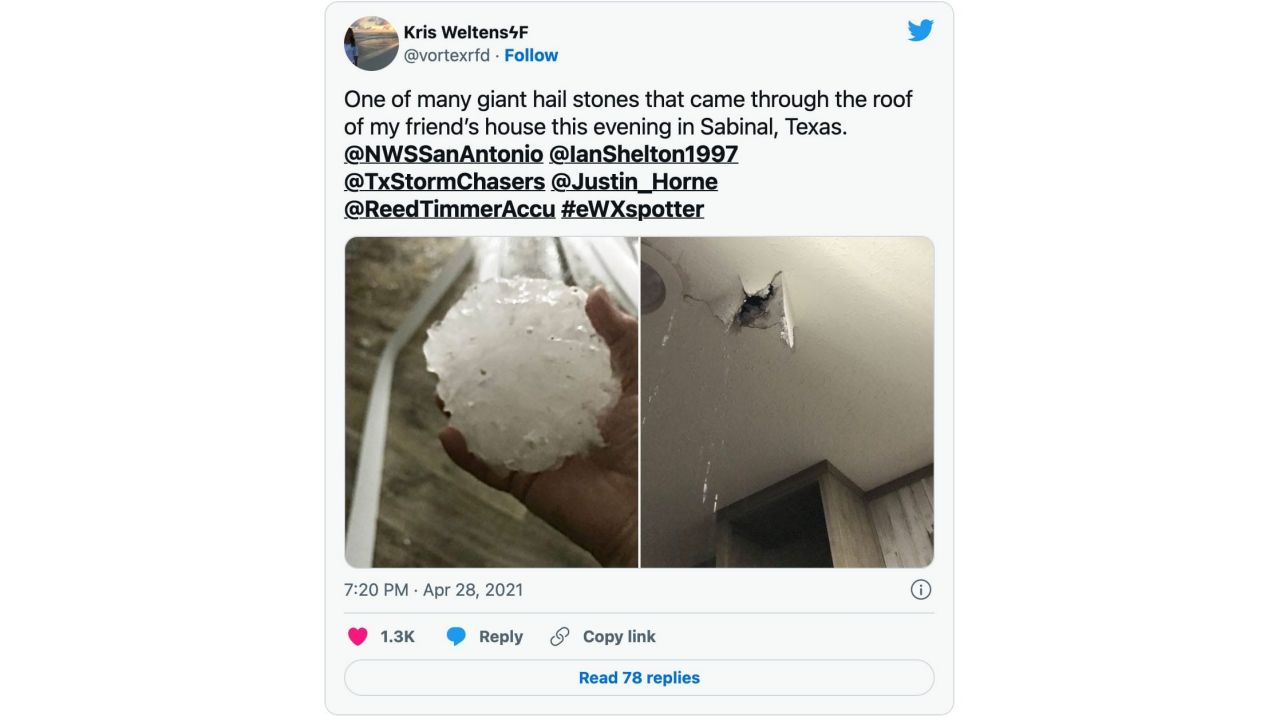
What is the difference between sleet and hail?
Sleet forms during winter storms. A thin warm layer of air will turn snow back to water, before it refreezes again into ice pellets. Sleet is smaller than hail and typically bounces off the ground.
Hail, on the other hand, forms in the summer, fall or spring months. Drops of precipitation are brought via an updraft into the upper levels of the atmosphere. This cycle continues until the updraft weakens or the hailstone gets too big for the thunderstorm to carry it.
How does hail form?
Hail forms when layers of ice are attached to a cloud. These frozen droplets are caught in the updraft of a thunderstorm when they are on their way to earth. When they reach higher levels of the atmosphere, they collide with other water droplets, which will freeze and stick to it upon impact. This cycle continues until the ice becomes too heavy and the hail falls to earth.
What causes hail to occur?
In order for hail storms to form, severe thunderstorms with strong updraft winds must take place.The stronger the updraft, the bigger the hail will be. The largest recorded hail in the US had a circumference of 18.5 inches.
Additionally, the air needs to be just cool enough that the ice will not melt when reaching the ground. Regions such as Florida have severe thunderstorms, but have less hail than other areas of the country due to its warm temperatures.
What areas see the most hail?
From March to October, an area of the U.S. known as Hail Alley braces for these severe weather conditions. This area of the U.S. includes areas such as Texas, Nebraska, Colorado and parts of Canada. This region is most heavily impacted by hail in comparison to the rest of the country.
This area features the perfect conditions for hail. With much of this land at a higher elevation, it’s easier for ice to remain solid before hitting the ground.
Does hail mean a tornado?
Hail does not necessarily mean a tornado. However, since both of these weather conditions are the results of severe thunderstorms, it’s important to be cautious.
Forecasting and predicting hail storms
Can we predict hail storms?
Fortunately, hail storms are able to be predicted. Dual polarization radar technology can help forecasters determine if precipitation will include hail, ice pellets, rain and snow.
Forecasters also look to historical data to determine trends. Previous hail storms allow meteorologists to determine a pattern to better predict a time frame for when hail storms are more likely to occur.
How do you know if a hail storm is coming?
Weather conditions must be just right in order for hail to occur. The most important factors are dark, gray clouds alongside thunder and lightning in freezing or below freezing temperatures. When thunder is strong enough to raise water droplets up into freezing temperatures, hail is formed.
Does hail show up on radar?
While it is not always easy to decipher, hail does show up on weather radar. Sometimes it can be mistaken for extremely heavy rainfall. Certain technologies are able to help you tell the difference between rain, hail or snow.
Hail weather solutions for businesses
When there’s potential for hail, advanced warning helps businesses make smart decisions.
Accurate hail forecasts. Actionable data. Proactive alerting.
Weather conditions need to align just right for hail to form. Hail is a highly-localized weather event and the severity of the storm can change from minute to minute. Businesses need accurate weather data that helps predict hail in order to take appropriate action that protects people and assets. Below are examples of industries that can benefit from accurate weather data and insights:
Media & Broadcast
A severe hail storm means public safety is a concern. Local TV stations have to act quickly to spread the word about the threat in the area. Broadcast stations now have multiple channels (mobile apps and alerts, web and social media) to reach viewers and all should remain updated with the latest critical storm information. Leveraging the Max Ecosystem, which is designed with efficiency and station workflow in mind, allows presenters to create channel-specific content in just a few clicks and enables frequent updates as new data comes in on the storm.
Advertising
Weather triggered advertising can be an effective strategy for marketers looking to connect with consumers. Insurance providers, grocery stores, and other companies can leverage accurate weather data and location information to target the right consumers with the right creative.
Final thoughts
Accurate weather forecasting data can help prepare communities for impending storms. By leveraging high-quality forecast graphics and weather insights from The Weather Company, your team can communicate severe weather updates and life-saving information. The Max Ecosystem allows meteorologists to dispense this information easily across multiple channels. To learn more, contact us today.
Let’s talk
To learn more about our professional weather and traffic software solutions for the media industry, contact our media experts today.
Contact us
